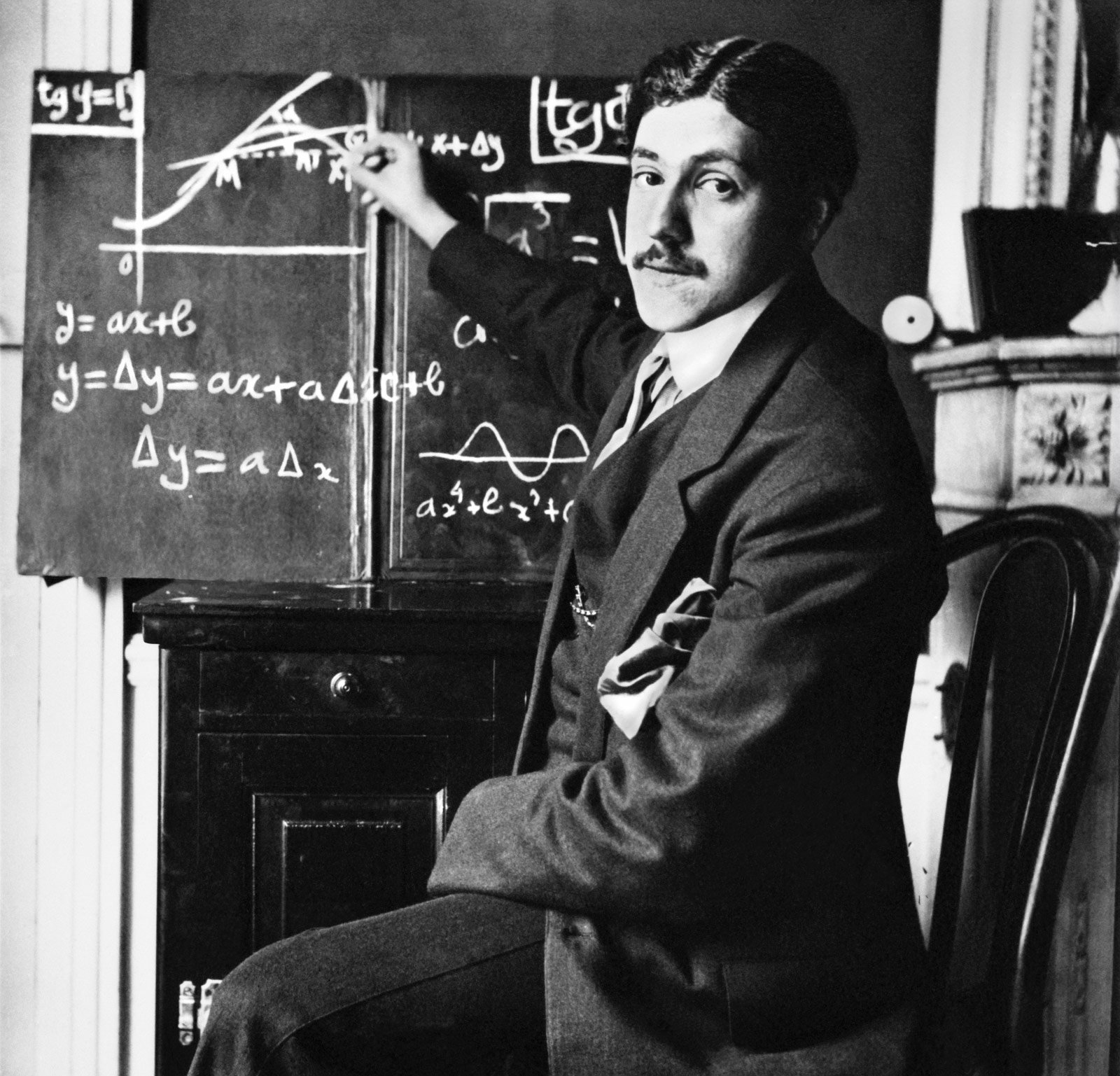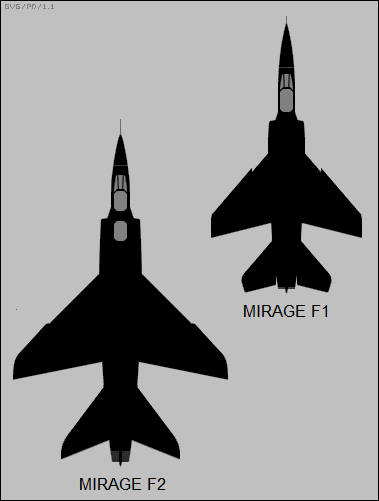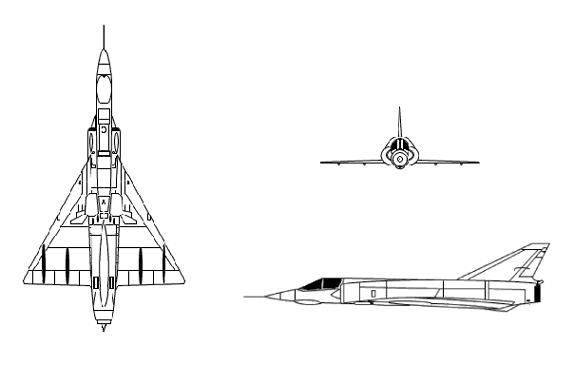|
Dassault Mirage
Mirage is a name given to several types of jet aircraft designed by the French company Dassault Aviation (formerly Avions Marcel Dassault), some of which were produced in different variants. Most were supersonic fighters with delta wings. The most successful was the Mirage III in its many variants and derivatives, which were widely produced and modified both by Dassault and by other companies. Some variants were given other names, while some otherwise unrelated types were given the Mirage name. Early prototypes * MD550 Mystère Delta, the original Dassault experimental delta jet, which provided the baseline for the main Mirage series. Two were built, later renamed Mirage I and II respectively: ** Mirage I, the MD550-01 renamed. ** Mirage II, the MD550-02 renamed. Mirage III/5/50 series The most successful line of Mirages were a family of supersonic delta-winged fighters, all sharing the same basic airframe but differing in powerplant, equipment and minor details. Early example ... [...More Info...] [...Related Items...] OR: [Wikipedia] [Google] [Baidu] |
Dassault Mirage F1
The Dassault Mirage F1 is a French fighter and attack aircraft designed and manufactured by Dassault Aviation. It was developed as a successor to the Mirage III family. During the 1960s, Dassault commenced development of what would become the Mirage F1 as a private venture, alongside the larger Mirage F2. Work on the F1 eventually took precedence over the costlier F2, which was cancelled during the late 1960s. The French Air Force (''Armée de l'Air'') took interest in the fledgling fighter to meet its requirement for an all-weather interceptor aircraft. Accordingly, initial production units were equipped with the Thomson-CSF Cyrano IV monopulse radar. During the latter half of 1974, the Mirage F1 entered service in the French Air Force. Shortly thereafter, the type was deployed as the main interceptor of the French Air Force, a capacity which it continued to serve in until the arrival of the Mirage 2000. It later transitioned to an aerial reconnaissance role. In July 2014 ... [...More Info...] [...Related Items...] OR: [Wikipedia] [Google] [Baidu] |
Dassault Aviation
Dassault Aviation SA () is a French Aerospace manufacturer, manufacturer of military aircraft and business jets. It was founded in 1929 by Marcel Dassault, Marcel Bloch as Société des Avions Marcel Bloch (Marcel Bloch Aircraft Company). After World War II, Marcel Bloch changed his name to Marcel Dassault, and the name of the company was changed to Avions Marcel Dassault on 20 January 1947. In 1971 Dassault acquired Breguet Aviation, Breguet, forming Avions Marcel Dassault-Breguet Aviation (AMD-BA). In 1990 the company was renamed Dassault Aviation, and is a subsidiary of Dassault Group. Dassault Aviation has been headed by Éric Trappier since 9 January 2013. History The Société des Avions Marcel Bloch was founded by Marcel Dassault, Marcel Bloch in 1929. In 1935 Bloch and Henry Potez entered into an agreement to buy ''Société Aérienne Bordelaise'' (SAB), subsequently renamed ''Société Aéronautique du Sud-Ouest''. In 1936 the arms industry in France was nationa ... [...More Info...] [...Related Items...] OR: [Wikipedia] [Google] [Baidu] |
VTOL
A vertical take-off and landing (VTOL) aircraft is one that can takeoff and landing, take off and land vertically without relying on a runway. This classification can include a variety of types of aircraft including helicopters as well as thrust-vectoring fixed-wing aircraft and other hybrid aircraft with powered helicopter rotor, rotors such as cyclogyro, cyclogyros/cyclocopters and gyrodynes. Some VTOL aircraft can operate in other modes as well, such as CTOL (conventional take-off & landing), STOL (short take-off & landing), or STOVL (short take-off & vertical landing). Others, such as some helicopters, can only operate as VTOL, due to the aircraft lacking landing gear that can handle taxiing. VTOL is a subset of V/STOL (vertical or short take-off & landing). Some aerostat, lighter-than-air aircraft also qualify as VTOL aircraft, as they can hover, takeoff and land with vertical approach/departure profiles. Electric vertical takeoff and landing aircraft, or eVTOLs, are being ... [...More Info...] [...Related Items...] OR: [Wikipedia] [Google] [Baidu] |
Dassault Mirage 4000
The Dassault Mirage 4000 (sometimes called the Super Mirage 4000) is a French prototype twinjet fighter aircraft developed by Dassault-Breguet from their Mirage 2000. Design and development The Mirage 4000 was noticeably larger and heavier than the single-engined Mirage 2000, the 4000 having two SNECMA M53-2 turbofans. It also featured small canards above the engine air intakes and a true bubble canopy, compared to the Mirage 2000 and previous Mirages. Despite the changes, the two aircraft remained similar, sharing the delta wing design, semi-conical Oswatitsch-type air intakes, and general configuration. The Mirage 4000 first flew on 9 March 1979. It was financed as a private venture by Dassault. The Mirage 4000 was comparable in size to the United States F-15 Eagle, and was designed to be both a long-range interceptor and a fighter-bomber. In the early 1980s, Dassault ended the program shortly after the Royal Saudi Air Force ordered a large number of Panavia Tornado ai ... [...More Info...] [...Related Items...] OR: [Wikipedia] [Google] [Baidu] |
Dassault Mirage G
The Dassault Mirage G, also known as the Mirage IIIG,Carbonel 2023. was a variant of the French Dassault Mirage series of supersonic warplanes, but with a variable-sweep wing. Three prototypes were flown; one single-engined G and two twin-engined G8 examples (which had begun construction as the G4). Various roles, equipment fits and other variants were proposed, but none entered production.Green 1972, p. 84. History Origins In 1963 the French defence ministry initiated studies on variable-sweep wing aircraft for dual land and aircraft carrier use in response to the American TFX program (which would lead to the General Dynamics F-111). Alongside the theoretical research undertaken by ONERA, Avions Marcel Dassault began studies of a Mirage variant. An early study was the Mirage F4G. In 1964 they proposed the model MD800 for a carrier-based two-seat, twin-engined Naval version to meet the DAFNE requirement. Alongside it they also proposed a smaller single-engined Mirage IIIF ... [...More Info...] [...Related Items...] OR: [Wikipedia] [Google] [Baidu] |
Dassault Mirage F2
The Dassault Mirage F2 was a French prototype two-seat ground attack/fighter aircraft, which was designed to serve as a test bed for the SNECMA TF306 turbofan engine. The F2 also influenced the subsequent Dassault Mirage G, a variable geometry design. Design and development Dassault were tasked in the early 1960s to design a low-altitude intruder that did not have the high approach speeds associated with the delta wing of the Mirage III. Unlike the Mirage III, the F2 had a high-mounted swept wing and horizontal tail surfaces. The prototype powered by a Pratt & Whitney TF30 turbofan first flew on 12 June 1966. It was re-engined with the SNECMA TF306 for the second flight on 29 December 1966. Two parallel developments were a single-seat Mirage F3 interceptor and a scaled-down and simpler Mirage F1. Eventually the French Air Force chose to develop the French-engined F1, and the F2 did not enter production. The fuselage and engine from the F2 formed the basis of a variable-geome ... [...More Info...] [...Related Items...] OR: [Wikipedia] [Google] [Baidu] |
Dassault Mirage 2000
The Dassault Mirage 2000 is a French multirole, single-engine, delta wing, fourth-generation jet fighter manufactured by Dassault Aviation. It was designed in the late 1970s as a lightweight fighter to replace the Mirage III for the French Air Force (''Armée de l'air''). The Mirage 2000 evolved into a multirole aircraft with several variants developed, with sales to a number of nations. It was later developed into the Mirage 2000N and 2000D strike variants, the improved Mirage 2000-5, and several export variants. Over 600 aircraft were built and it has been in service with nine nations. Development Previous projects The origins of the Mirage 2000 could be traced back to 1965, when France and Britain agreed to develop the "Anglo-French Variable Geometry" ( AFVG) swing-wing aircraft. Two years later, France withdrew from the project on grounds of costs, after which Britain would collaborate with West Germany and Italy to ultimately produce the Panavia Tornado. Dassault instea ... [...More Info...] [...Related Items...] OR: [Wikipedia] [Google] [Baidu] |
Dassault Mirage IV
The Dassault Mirage IV is a French supersonic strategic bomber and deep-reconnaissance aircraft. Developed by Dassault Aviation, the aircraft entered service with the French Air Force in October 1964. For many years it was a vital part of the nuclear triad of the ''Force de dissuasion, Force de Frappe'', France's Mutual assured destruction, nuclear deterrent striking force. The Mirage IV was retired from the nuclear strike role in 1996, and the type was entirely retired from operational service in 2005. During the 1960s, there were plans to export the Mirage IV. In one proposal, Dassault would have entered a partnership with the British Aircraft Corporation to jointly produce a Mirage IV variant for the Royal Air Force and potentially for other export customers, but this project did not come to fruition. The Mirage IV was ultimately not adopted by any other operators. Development Origins During the 1950s, France embarked on an extensive France and weapons of mass destruction, ... [...More Info...] [...Related Items...] OR: [Wikipedia] [Google] [Baidu] |
ENAER Pantera
The Dassault Mirage 5 is a French supersonic attack aircraft/fighter-bomber designed by Dassault Aviation during the 1960s and manufactured in France and other countries. It was derived from Dassault's popular Mirage III fighter and spawned several variants of its own, including the IAI Kfir. In Pakistan's service, the Mirage 5s are modified and are capable of nuclear weapons delivery. Design and development Early development The Mirage 5 grew out of a request to Dassault from the Israeli Air Force. Since the weather over the Middle East is clear and sunny most of the time, the Israelis suggested removing the air intercept radar and its avionics, normally located behind the cockpit, from the standard Mirage IIIE to reduce cost and maintenance, and replacing them with more fuel storage for attack missions.Duchateau/Salvador 1990, p. 26.Jackson 1985, pp. 32–34. In September 1966, the Israelis placed an order for 50 of the new aircraft. Due to customer preference some variants o ... [...More Info...] [...Related Items...] OR: [Wikipedia] [Google] [Baidu] |
Atlas Cheetah
The Atlas Cheetah is a South African fighter aircraft designed and produced by the aviation company Atlas Aircraft Corporation (later Denel Aeronautics). It was primarily designed and developed to be operated by the South African Air Force (SAAF). The Cheetah was developed amid the Border War of the 1980s as a major upgrade of the French-built Dassault Mirage III fleet operated by the SAAF. The programme integrated technology from the Israeli-built IAI Kfir, which had been derived from the Mirage 5/ IAI Nesher. The upgrade programme, which was known as ''Project Cushion'', produced three variants; the two-seat ''Cheetah D'', the single-seat ''Cheetah E'', and the single-seat ''Cheetah C''. All three models were inducted into the SAAF, functioning for a time as the service's most capable fighter and strike aircraft. A single ''Cheetah R'', intended for aerial reconnaissance, was built as a prototype, but this variant never entered service. During 1992, the Cheetah E model w ... [...More Info...] [...Related Items...] OR: [Wikipedia] [Google] [Baidu] |
Project ROSE
Project ROSE ("Retrofit of Strike Element") was a program by the Pakistan Air Force to upgrade the avionics of its aging Dassault Mirage IIIEP and Mirage 5PA fighter jets. These had originally been built either by Dassault Aviation in France, or by the Government Aircraft Factories (GAF) in Australia. The program, based at the Pakistan Aeronautical Complex, focused on upgrading the military avionics and onboard computer systems, with equipment supplied by Pakistani Margella Electronics, French SAGEM and Italian SELEX consortia. The program was initiated after the PAF began considering retiring or phasing out these aircraft from active service. The Pakistan Air Force, which was already operating Dassault Mirage IIIs and Mirage 5s, began its procurement of second-hand Mirage fighters from Australia, Lebanon, Libya, and Spain at prices reported to be within the Ministry of Defence's budget. More than 90% of aircraft were retrofitted at the Pakistan Aeronautical Complex in Kamra ... [...More Info...] [...Related Items...] OR: [Wikipedia] [Google] [Baidu] |
IAI Nammer
The IAI ''Nammer'' (נמר ''"Leopard"'') was a fighter aircraft developed in the Israeli aerospace manufacturing Israel Aerospace Industries (IAI) during the late 1980s and early 1990s. The programme was pursued as a private venture and the resultant aircraft was intended for the export market. During the 1980s, IAI decided to embark upon the independent development of a modernised version of the IAI Kfir; reusing its airframe and pairing it with a modernised cockpit, engine, and avionics, the latter of which was to have taken advantage of the earlier work undertaken for the cancelled IAI Lavi programme. These changes were to result in greater performance, range, and air-to-air combat capabilities than the preceding Kfir. Named ''Nammer'', the aircraft was to be offered under various different configurations, including alternative engines and radars, as well as prospective licensed production arrangements, to customers. IAI stated that they were willing to be highly flexible wi ... [...More Info...] [...Related Items...] OR: [Wikipedia] [Google] [Baidu] |








